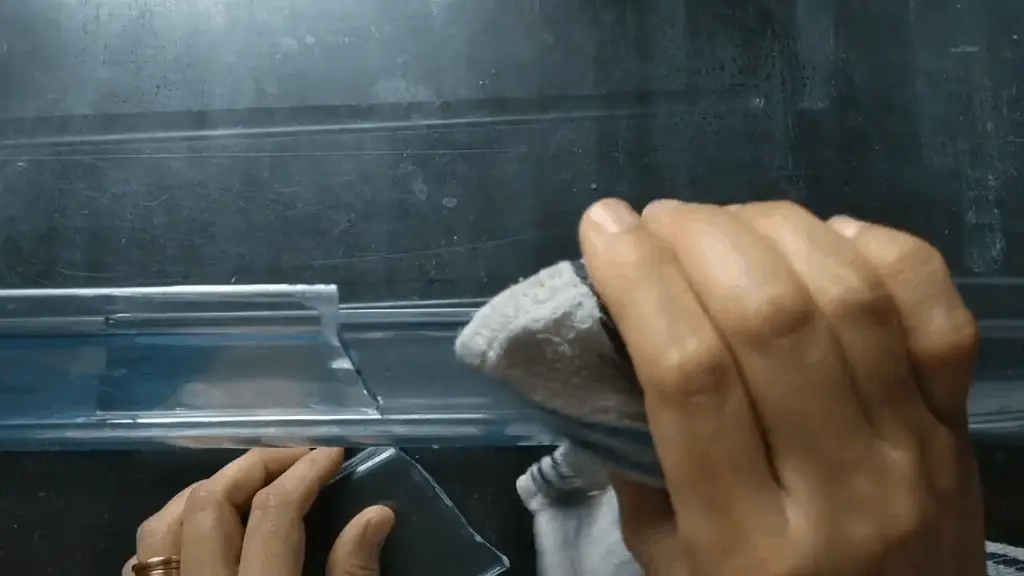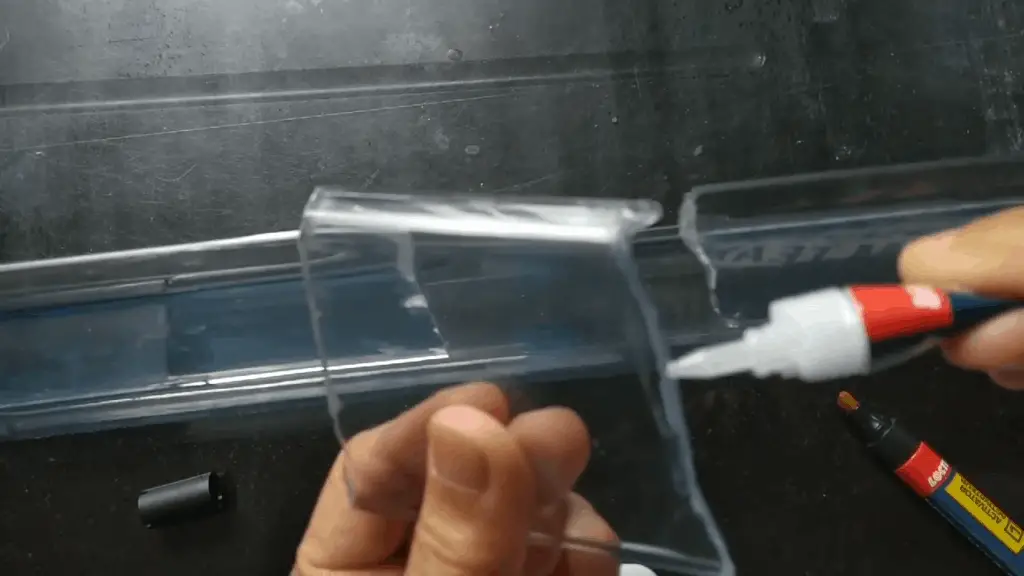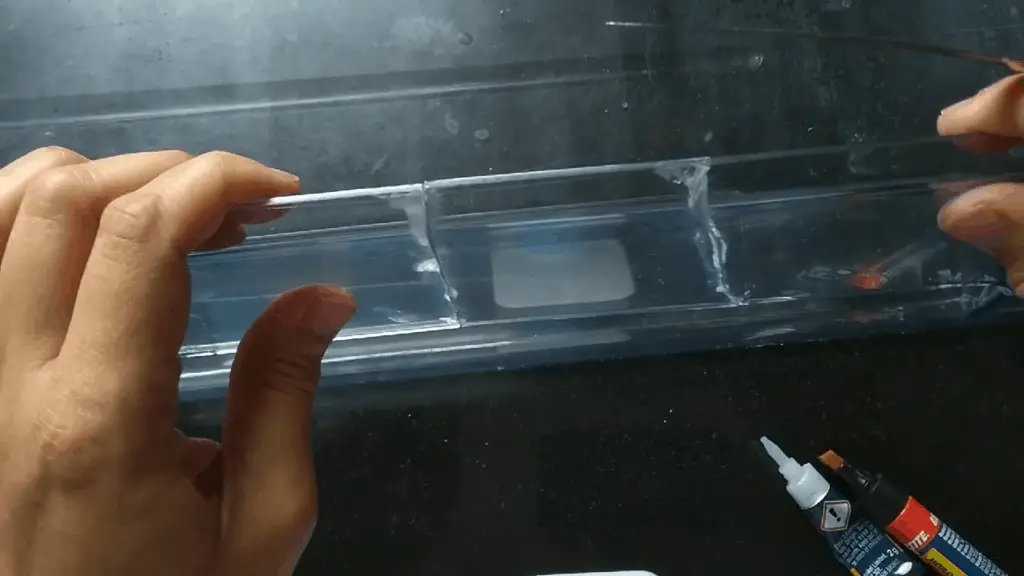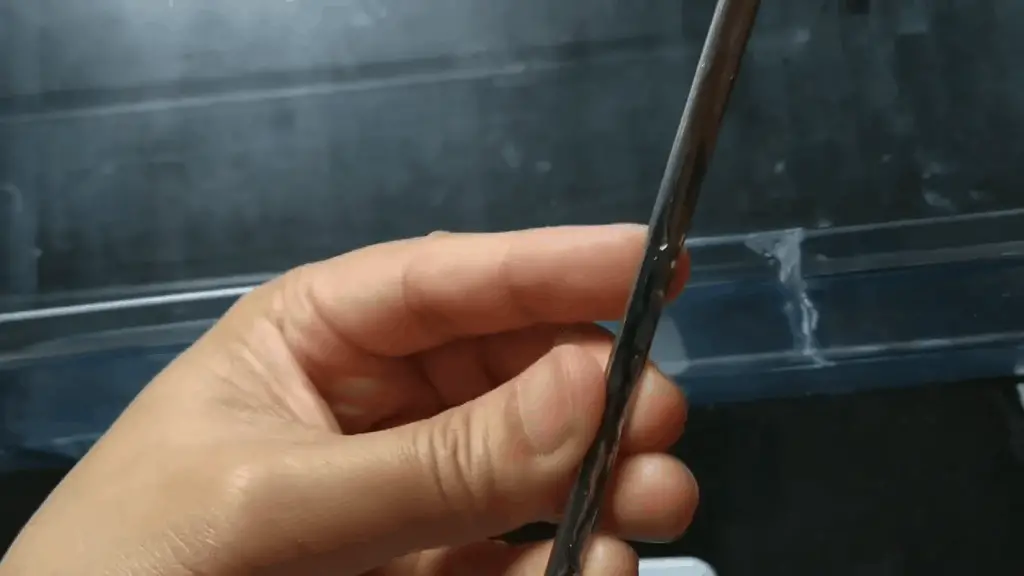Plastic is a versatile material that can be used in many different projects. But how do you glue plastic together? Well, we have the answer! Here are 7 steps to help you glue your pieces of plastic together:
- Steps to glue plastic together
- 1. Clean the surfaces
- 2. Apply glue to both pieces of plastic
- 3. Press them together and hold for a few minutes
- 4. Use clamps or weights to make sure they stay in place until dry
- 5. Strengthen force-resistance with a metal piece (optional)
- 6. Let it dry overnight
- 7. Remove clamps and weights, let it sit for another 24 hours before using
- Some final words
- Frequently Asked Questions
Steps to glue plastic together
1. Clean the surfaces
Wipe down the pieces with water and soap. This removes any dirt or oil, which could stop the glue from sticking properly to the plastic.
Don’t use solvents like acetone because they can damage some types of plastics. And avoid using alcohol as it will make your surfaces dry out even more!

2. Apply glue to both pieces of plastic
You can use superglue or epoxy glue. Apply the glue to both surfaces and leave it for a few minutes so that the plastic pieces are wet enough to stick together well.

3. Press them together and hold for a few minutes
If your pieces are a little bit misaligned, you may need to hold them together for longer than the glue takes to dry. This will give it enough time for the surfaces to stick well enough that they won’t come apart on their own.

But how long do plastics take to set? Well, how long it takes depends on the kind of plastic you are working with. For example:
- ABS plastics take around 30 seconds to set completely
- PVC plastics can take up to a couple of minutes (or longer if you don’t use enough glue)
Once your surfaces have stuck together, leave them for at least ten minutes before using them.
4. Use clamps or weights to make sure they stay in place until dry
Plastic pieces can warp or bend when they are wet. This is how you glue plastic together, but if the piece has been bent into a curve then it will want to come apart once the surface sets.
5. Strengthen force-resistance with a metal piece (optional)
Force resistance is usually weaker at the broken point, even after you already fixed it with glue. Strengthening this area with a metal piece will help make sure that it doesn’t break again.
To do this, apply more glue to the broken edge and stick on your small strip of metal at an angle. Then leave until dry (again at least ten minutes).

6. Let it dry overnight
The glue takes the longest time to dry if you’ve used a lot of it and/or applied it very thickly. You can speed up how how-to glue plastic pieces by putting them in an oven but this is not recommended because how do you glue plastic together? It’s better to be safe than sorry!
It may take over 12 hours for your plastics to be completely ready, so plan ahead before doing any gluing or assembly work using super glue or epoxy.
Once they are dry, however long that takes congratulations!
7. Remove clamps and weights, let it sit for another 24 hours before using
It’s best to leave your pieces overnight before using them. This allows the surfaces to dry completely and any glue that has set can also have its strength tested for safety! Plus, leaving it overnight is good practice in case something unexpected happens during use or while storing it somewhere safe – when how do you glue plastic together? You’ll be glad you waited until everything was ready 🙂
Some final words
If you want to have a better image of how to glue plastic together, check out the video below:
We hope this article has helped to clear up the misconceptions around gluing plastics together. If you have any other questions, please do not hesitate to leave a comment below. Thank you for reading!
Frequently Asked Questions
What is the strongest glue to use on plastic?
The strongest glue to use on plastic is usually polyvinyl acetate cement. This adhesive can be used for a variety of other materials and is very strong when used correctly. For most adhesives, it’s best not to layer more than 3-4 triangles in any given area – this prevents the adhesive from seeping out small spaces and exposing your object to damage.
This type of cement should only be used with pressure-sensitive items if you peel off less than 60% of the backing paper with each application or will have an exposed edge after removal (watch out for sharp edges as well). The main downside of polyvinyl acetate cement is that paint won’t adhere well to plastic once it dries and overlaps
Does Gorilla Glue work on hard plastic?
Gorilla Glue works on hard plastic, glass, drywall, and tile. The glue is water-resistant once it has dried. The Gorilla Super Glue website states: “Yes you can use Gorilla Super Glue to glue hard plastics together but be aware that some plastics are more heat-sensitive than others and may warp when heated during the cooling process.”
Furthermore, it’s important to know what kind of booster will work best for the type of adhesive needed so as to maximize durability through various environments (i.e., appropriate cleaners for different surfaces).
Does hot glue work on plastic?
Yes, hot glue works very well on plastics. Hot glue can easily attach to the cold plastic surface even if it is a textured or bumpy surface. This makes it a great option for plastic projects!.
Hot glue is an excellent adhesive when you’re working with plastics. One of the things that make hot glue so good at attaching plastics together is its flexibility and low melting point, which allows it to be applied conveniently without overheating the material beforehand.
Hot-melt adhesives are made from heat-sensitive polymers that have been fused by heating them above their melting temperature and then applying them as an extruded or sprayed fluid onto surfaces before they cool (as in poster application).

I have a 45 year old Skil Saw. It fell and the handle cracked, the saw still works, but the impact caused the handle to crack and now the handle has some give. It is a two piece handle and I am okay with gluing it solid. I have unsuccessfully looked online for a used handle. Thanks for any free advice.
Thank you